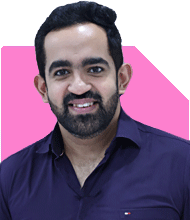Looking for a Secure Retirement at 60: 42-Year-Old Earns 91k Monthly, Expecting 2 Lakhs After Retirement, Owns Home
Ramalingam Kalirajan |8092 Answers |Ask -Follow
Mutual Funds, Financial Planning Expert - Answered on Jul 16, 2024
He has an MBA in finance from the University of Madras and is a certified financial planner.
He is the director and chief financial planner at Holistic Investment, a Chennai-based firm that offers financial planning and wealth management advice.... more

Hi, i will retire at 60 years, i am 42 and my monthly income is 91k and i am expecting the monthly income to be at 2 lakhs. I live in own house. Need suggestion to have a secured retired life.
Your current monthly income is Rs 91,000.
You expect this to grow to Rs 2 lakhs.
Current Investments
You live in your own house, which is an asset.
However, don't rely on real estate for liquid investments.
Retirement Planning
To secure your retired life, diversify investments.
Invest in a mix of equity and debt mutual funds.
Equity Mutual Funds
Equity funds provide high growth potential.
Consider large-cap, mid-cap, and flexi-cap funds.
These offer balanced risk and return.
Debt Mutual Funds
Debt funds offer stability and moderate returns.
They are less risky than equity funds.
They ensure a steady income during retirement.
Systematic Investment Plan (SIP)
Start SIPs in both equity and debt mutual funds.
Invest a fixed amount monthly for disciplined saving.
SIPs help in rupee cost averaging and compounding.
Benefits of Actively Managed Funds
Actively managed funds aim to beat the market.
Professional managers make strategic decisions.
They adapt to market changes better than index funds.
Avoid Direct Funds
Direct funds lack expert guidance.
Regular funds with CFP advice provide better returns.
Emergency Fund
Maintain an emergency fund of at least 6 months of expenses.
This ensures liquidity during unexpected events.
Health Insurance
Ensure you have comprehensive health insurance.
This reduces medical expenses burden post-retirement.
Final Insights
Your current plan is on the right track.
Diversify your investments for balanced growth and stability.
Plan with a Certified Financial Planner for best results.
Best Regards,
K. Ramalingam, MBA, CFP,
Chief Financial Planner,
www.holisticinvestment.in
You may like to see similar questions and answers below
Ramalingam Kalirajan |8092 Answers |Ask -Follow
Mutual Funds, Financial Planning Expert - Answered on Jul 19, 2024
Ramalingam Kalirajan |8092 Answers |Ask -Follow
Mutual Funds, Financial Planning Expert - Answered on Jul 15, 2024
Ramalingam Kalirajan |8092 Answers |Ask -Follow
Mutual Funds, Financial Planning Expert - Answered on Jul 27, 2024
Ramalingam Kalirajan |8092 Answers |Ask -Follow
Mutual Funds, Financial Planning Expert - Answered on Oct 21, 2024
Mayank Chandel |2094 Answers |Ask -Follow
IIT-JEE, NEET-UG, SAT, CLAT, CA, CS Exam Expert - Answered on Mar 10, 2025
Rajesh Kumar Singh |176 Answers |Ask -Follow
IIT-JEE, GATE Expert - Answered on Mar 10, 2025
Radheshyam Zanwar |1399 Answers |Ask -Follow
MHT-CET, IIT-JEE, NEET-UG Expert - Answered on Mar 10, 2025
Rajesh Kumar Singh |176 Answers |Ask -Follow
IIT-JEE, GATE Expert - Answered on Mar 10, 2025
Rajesh Kumar Singh |176 Answers |Ask -Follow
IIT-JEE, GATE Expert - Answered on Mar 10, 2025
Rajesh Kumar Singh |176 Answers |Ask -Follow
IIT-JEE, GATE Expert - Answered on Mar 10, 2025
Rajesh Kumar Singh |176 Answers |Ask -Follow
IIT-JEE, GATE Expert - Answered on Mar 10, 2025
Rajesh Kumar Singh |176 Answers |Ask -Follow
IIT-JEE, GATE Expert - Answered on Mar 10, 2025
Nayagam P P |4311 Answers |Ask -Follow
Career Counsellor - Answered on Mar 10, 2025
Aamish Dhingra |13 Answers |Ask -Follow
Life Coach - Answered on Mar 10, 2025





















